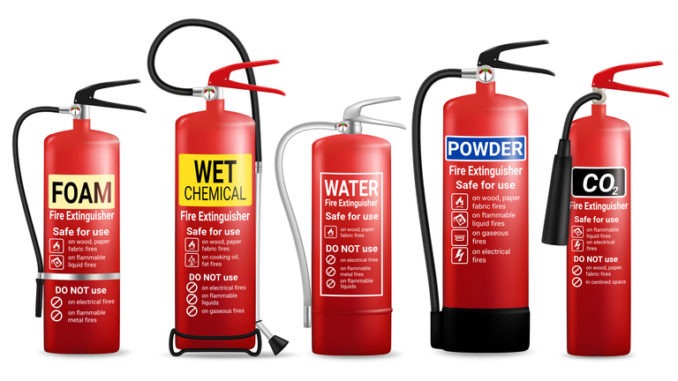
Ashley Hickling, fire sales manager at STANLEY Security, informs Practice Business about how to correctly use fire extinguishers to ensure you are more equipped to deal with a fire in the unfortunate event one breaks out in your practice
Even if your practice is kitted out with the latest fire detection and suppressant systems, fire extinguishers are an essential asset when it comes to proofing your building against a fire emergency; they can help control small outbreaks of fire quickly, preventing flames from spreading and causing more damage. In more severe emergencies, fire extinguishers can save lives.
Like most people, you probably walk past the fire extinguishers in your premises every day without a thought. Those little devices are primed and ready for action when needed – but are you? Do you know how to use one? Do you know which types you should be using? How often should they be serviced? And what should you do with out of date ones?
Matching the fire with the fire extinguisher
There’s no smoke without fire, or so the saying goes. If only it were that simple. True, the two go hand-in-hand, but you may be surprised to realise there are different types of fire, with different characteristics. Some fires smoulder, creating large amounts of smoke, and others are the opposite – fast flaming fires with almost invisible smoke. Here are the six classes of fire pertinent to most standard commercial premises:
- Class A – fires involving solid materials such as wood, paper or textiles.
- Class B – fires involving flammable liquids such as petrol, diesel or oils.
- Class C – fires involving gases.
- Class D – fires involving metals.
- Electrical fires – fires involving live electrical apparatus (these don’t get an ‘official’ category)
- Class F – fires involving cooking oils
Class A is the most common fire type but, walking around your building, you should be able to identify areas where other fire types might arise.
To deal with the different fire types, a range of fire extinguishers are available. Here are the types of fire extinguisher, their colour code (put on the extinguisher for quick identification) and what types of fire they are suitable for:
- Wet chemical (yellow label): Class A and F
- Water (red label): Class A only
- Water mist (white label): All classes
- Foam (cream label): Class A and B
- Dry powder (blue label): Class A, B, C and some electrical
- Carbon dioxide (CO²) (black label): Class B and electrical
UK rules require you to have a minimum of two water extinguishers on each level of the building, typically located by exits and fire alarm call points. However, a combination of one water and one CO² or foam fire extinguisher is a common approach as the latter can be used to safely extinguish electrical fires without any damage to electrical equipment, which is present in most buildings.
The life of a fire extinguisher
Should you have need of them, you want your fire extinguisher ready to work at a moment’s notice, so get them serviced every year, or after each use. They must be replaced at the end of their lives which is ten years for CO² extinguishers and 15 years for all others.
If you need to dispose of your extinguisher, do not put it out with the rubbish. If you have just a couple of fire extinguishers you could take them to a local recycling centre, where staff will know what to do with them. However, check with your council first.
Using your fire extinguisher
Of course, it’s not just your fire extinguisher that needs to be ready in the event of a fire – you do too! The good news is that fire extinguishers are easy to use, mostly by means of the P.A.S.S. method:
P. Pull the pin on the fire extinguisher to interrupt the tamper seal.
A. Aim the fire extinguisher low, with the nozzle pointed at the base of the fire.
S. Squeeze the handle of the fire extinguisher to unleash the termination agent.
S. Sweep the nozzle from side to side at the bottom of the fire until it’s extinguished.
If the fireplace re-ignites, repeat the last three steps.
However, if you feel that fire safety may be a little out of your expertise, you could consider employing the services of a professional fire company to ensure the upmost safety for your practice.
For more information on fire safety, click here.


Be the first to comment